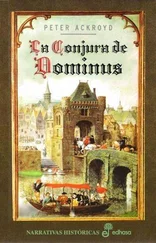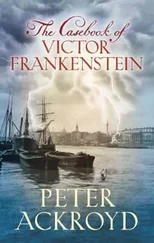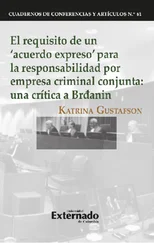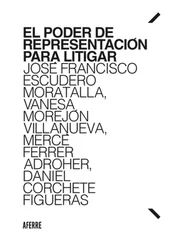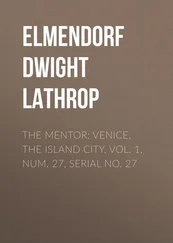It is hard, therefore, to praise the famous men and women of Venice. There were great artists, but there were no great individuals such as Lorenzo de’ Medici or Pope Julius II. In literature, as well as history, Venetians were not individualised. They were not well known for their eccentricities or for their triumphs. The comedies of Goldoni are the comedies of ordinary life; they are filled with the poetry of domestic fact and local intrigue, not the exploits or adventures or sensibilities of outstanding individuals or aberrant types. They reflect a benign social order. The people of Venice were always known for their docility. They might have been easily aroused to private passion, but they were always respectful to the authorities.
Burckhardt could never have written of Venice, as he once wrote of Florence, that “the individual was led to make the utmost of the exercise and enjoyment of power” and that the leaders of the people “acquired so marked a personal character.” None of the doges or governors of Venice ever had a “personal character.” The city had never been and could never have been a feudal state; feudalism was a system that sanctioned and maintained individual lordship. Machiavelli observed that the security and happiness of the city derived from the fact that, unlike any other state, its gentlemen did not have castles, or private armies, or retainers. Venice was “a great reputable work of joint human endeavour,” Goethe wrote, “a splendid monument, not of a master, but of a people.”
This was a matter of congratulation to the people themselves. Gasparo Contarini, in his book on the state and government of Venice published in 1547, remarked that “our ancestors, from whom we received so prosperous a commonwealth, all came together to maintain, honour and increase their country without any thought of personal glory or advantage.” They remained anonymous in life and in death; their only memorial was the state itself. “Though these Venetian gentlemen are extraordinary wise when they are conjunct ,” James Howell wrote in the seventeenth century, “take them single they are but as other Men.” The secret lay in their cohesiveness, one to another. Outside this context, these patricians had no identity; their private selves were taken up by their political selves. They were nothing without the state. With no “great men” Venice represents Tolstoy’s dictum that human history is governed by a million different chances and interests, bound together by what can only be called a communal instinct. Each period is an unveiling of that instinct. The author is truly overwhelmed by the complexity of this process.
The night and silence of Venice are profound. Moonlight can flood Saint Mark’s Square. Venice is most characteristic at night. It has a quality of stillness that suits the mood of time preserved. Then it is haunted by what it loves—itself. The doorways seem darker than in any other city, lapped as they are by the black water. The little lamps still flicker before the statues of the Virgin on the corners of the calli . There are many kinds of night in Venice—the capacious blue of the summer night, and the fierce blackness of the winter night. The modern Venetians rarely seem to go out at night. There are no drunkards roaming through the street in the hours of the early morning. There are no raucous shouts. One contemporary acoustics engineer has measured the level of nocturnal sound in Venice at thirty-two decibels; the night of other cities is approximately thirteen decibels louder. There is no “background” noise.
In the second half of the thirteenth century a government agency was established known as the signori di notte or lords of the night who were obliged to safeguard public order under cover of darkness. The Venetian night seems to have been an object of suspicion. It contained the horror of unseen water, deep and dark, and of winding labyrinthine alleys. It is the time of assault and of subversion. The night was the time for the spy or the assassin. Night was the opportunity for secret groups, or even for the writing of graffiti on the walls of the city against the lawful government. For a city that prided itself upon its rational order and control, the night was an especial enemy. In decrees it was announced that there were many pericula or dangers in the night; there was always the risk of “disordines et tumultationes” or disorder and riot. Night was chaos. Night was threat. The night of Venice seemed to invoke the original blackness and silence of the lagoon, from which the city rose; the night was the memory of origin.
Yet the ubiquity of the Carnival in later centuries literally lightened the mood. In the eighteenth century the memoirs of Goldoni reveal a little world of night. The shops remained open until ten o’clock in the evening, many of them not finally closing their doors until midnight; at midnight, too, “all the taverns are open, and suppers are in preparation in every inn and hotel.”
What, then, are the sounds of the night? The sound of the footfall echoes through this city of stone. Venice is a good acoustic instrument. There is the occasional chime. There is the sound of water lapping and slapping against stone as part of its everlasting movement. There may be a call upon the water, pure and resonant; still water carries the voice very far. The narrow streets can also act as funnels of sound. Then there is the scarcely discernible sound of the gondola. In the nineteenth century the more romantic travellers noted that there were times when music crept over the waters. Liszt, more perceptively, invoked the “silent noises” of the city; the murmur of the boat floating across the water is one of them.
There are always moments when silence seems to descend upon Venice. “Everywhere,” Dickens wrote in Pictures from Italy , “the same extraordinary silence.” For him it was the enforced silencing of modern life—no carriages, no wheels, no machinery. For many Victorian travellers the charm of Venice lay in its distance from modern industrialised civilisation. Two centuries before, John Evelyn had described Venice as “almost as silent as the middle of a field, there being neither rattling of coaches nor trampling of horses.” Nor noise of cars. You may turn a corner, and come upon an area without sound. No other city still has so many pockets of silence. In Michael Dibdin’s Dead Lagoon , the narrator declares that “such absolute, unqualified silence was troubling, as though some vital life function had ceased.”
There was a dark side of Venice, a side that the night conceals. There were many poor, and many outcasts. Beggars have always been an aspect of Venetian life. In the late fifteenth century the senate discussed the problem of old men, and others, who lay each night in the precincts of the ducal palace. A “home” and a hospital were constructed. But they were not enough. At times of famine, as in the winter of 1527, the poor died against the pillars. Children stood in the market of the Rialto, or in the Square, crying out “I am dying of hunger! I am dying of hunger and cold!” One contemporary recorded that “the city stank with their odour.” This is a measure of the intense confinement of urban living. And of course Venice could produce no food of its own.
In the early seventeenth century a new institution, the Ospedale dei Mendicanti, was erected to clear the streets and squares of the countless vagrants. All beggars in Venice were obliged to obtain a licence, and to lodge at the hospital; unlicensed beggars were expelled, and those who were reported to be too successful in their trade were consigned to the galleys. The owner of an unofficial beggars’ lodging house was whipped all the way from Saint Mark’s Square to the Rialto bridge.
Читать дальше




